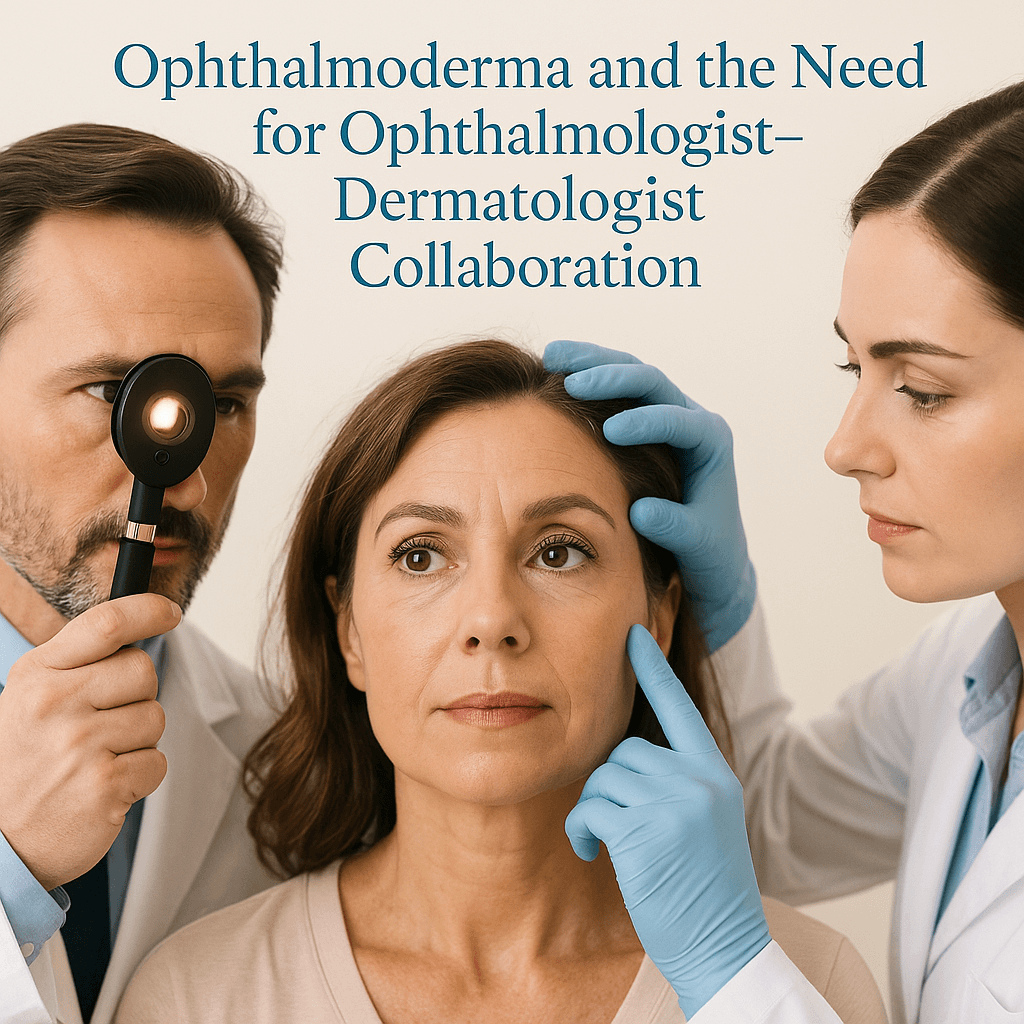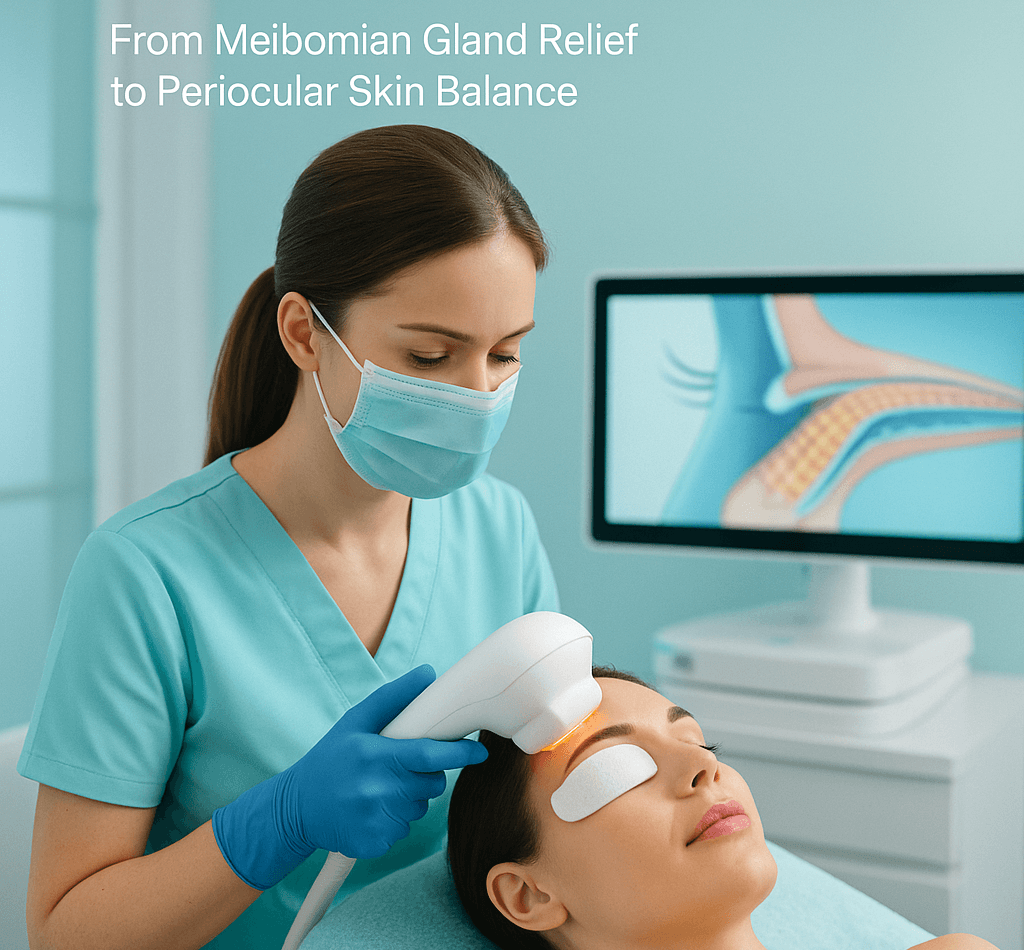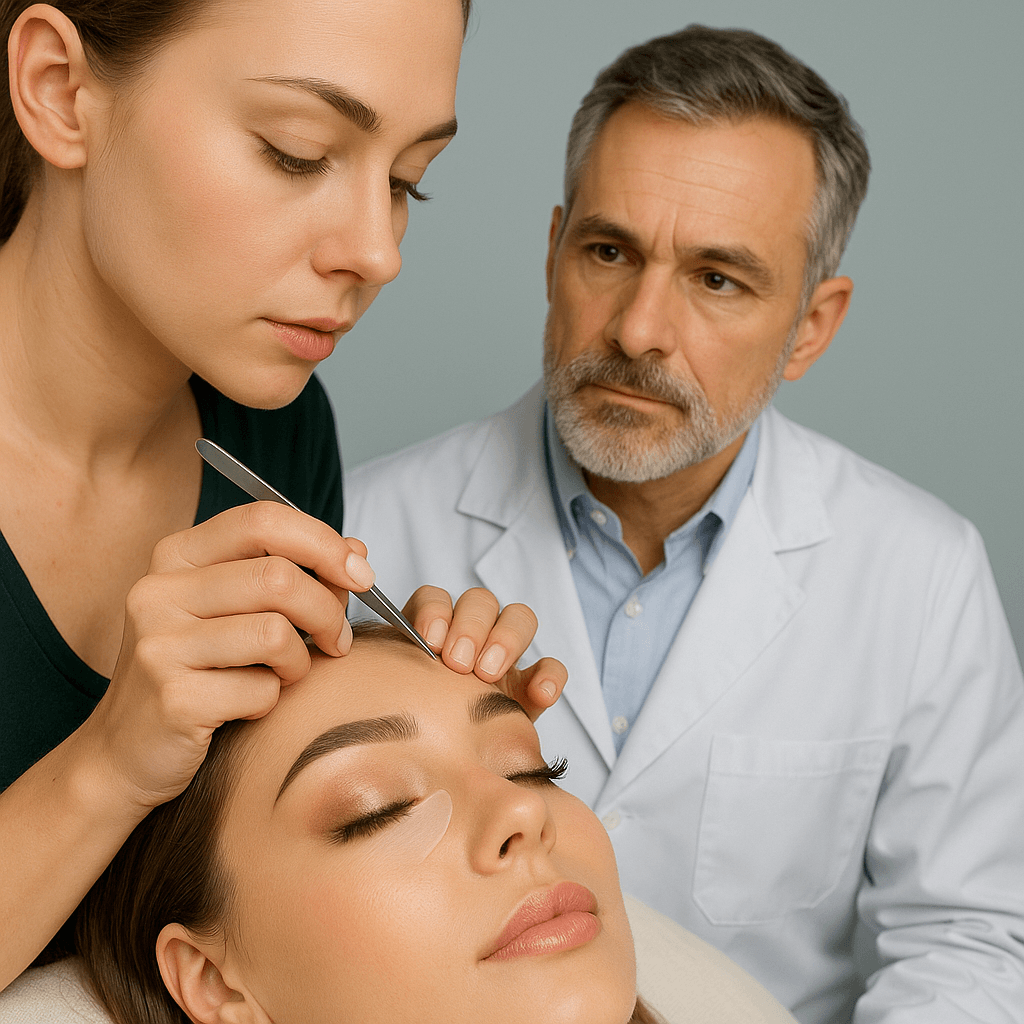Clinical Practice in Dermophthalmology
From Theory to Application – Science, Collaboration, and Care

Dermophthalmology is the evolving medical discipline
that unites Ophthalmology and Dermatology with a shared mission:
to ensure the holistic care of the eyes, eyelids, and surrounding skin.
The eye and the skin share a common embryologic origin from the ectoderm and operate as a single interconnected system — the Oculodermal Unit (Ophthalmoderma).
This concept, conceived in Greece, defines the functional and aesthetic continuum between the eye and the skin, recognizing that vision and appearance cannot be separated.
The Ophthalmoderma includes the eyelids, eyelashes, meibomian glands, ocular surface, and periocular skin — all of which must remain in harmony for optimal vision, comfort, and beauty.
When inflammation, poor hygiene eyelid / eyelash hygiene, or unsuitable aesthetic practices disturb this balance,
both eye health and facial aesthetics are affected.

1. The Oculodermal Unit (Ophthalmoderma) and the Collaboration Between Ophthalmologists and Dermatologists
- Within the framework of Dermophthalmology:
The ophthalmologist examines the eyelid margin, eyelashes, meibomian glands, and ocular surface, addressing dysfunctions such as blepharitis, MGD, and dry eye. - The dermatologist evaluates the periocular skin, managing conditions such as rosacea, seborrheic dermatitis, and other inflammatory disorders that affect eyelid function and ocular surface stability.
This collaboration is essential, as skin health directly impacts eyelid dynamics and tear film quality.
The Ophthalmoderma serves as the interface of ocular physiology and dermatologic wellness — a space where two medical disciplines meet to protect both sight and appearance.
Key References:
– Tomlinson A. et al., Ocul Surf, 2021.
– Baudouin C. et al., Prog Retin Eye Res, 2016.
– Geerling G. et al., Ocul Surf, 2017.

2. Therapeutic Applications in Dermophthalmology
- Thermal therapy (40–45°C): opens meibomian glands and improves lipid secretion.
- Daily eyelid hygiene: removes debris, biofilm, and Demodex to prevent inflammation.
- Massage and hydration: enhance microcirculation and reduce inflammatory stress.
- Microbiome support: restores the skin–eye flora balance with gentle, non-irritating cleansers and natural antimicrobials.
- IPL (Intense Pulsed Light) for MGD and ocular rosacea,
- Micropulsed thermal pulsation systems,
- Dermocosmeceuticals tested for both ophthalmic and dermatologic tolerance.

3. Aesthetic Practice & Eye Health – Lash Lifts, Extensions & Makeup
- obstruction of meibomian glands,
- ocular irritation and dryness,
- Demodex overgrowth,
- allergic or toxic reactions.
- patient safety,
- eye health,
- and the preservation of natural beauty.

4. Integration in Daily Medical and Aesthetic Practice
- Ophthalmologists, in diagnosing and treating ocular surface and eyelid disorders.
- Dermatologists, in managing skin diseases that influence eye comfort and function.
- Aesthetic professionals, in performing procedures safely and harmoniously with ocular physiology.

5. Case Studies
Case 1 – Chronic Blepharitis & Makeup
Female, 33 years old, daily eyeliner use.
➡️ After 4 weeks of lid hygiene and thermal therapy: 70% symptom reduction and visible improvement in appearance.
Case 2 – Rosacea & Meibomian Gland Dysfunction
Male, 52 years old, rosacea with ocular involvement.
➡️ IPL + hygiene protocol → restored lipid layer and decreased inflammation.
Case 3 – Lash Extensions & Demodex
Female lash artist, 29 years old.
➡️ Two weeks of targeted cleansing → inflammation resolved, clear eyes, better lash retention.
Conclusion
Dermophthalmology does not replace any specialty — it honors them all.
It builds bridges between ophthalmologists, dermatologists, and aesthetic professionals,
fostering cooperation, respect, and shared purpose.
Together, they advance a new model of care —
where health, prevention, and beauty coexist within the Ophthalmoderma continuum.
Because eye hygiene is not a luxury — it is culture.
